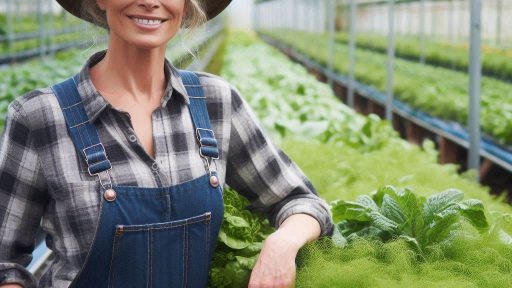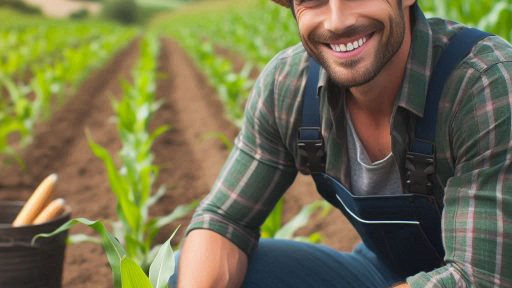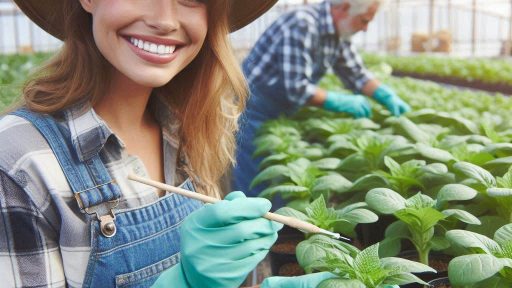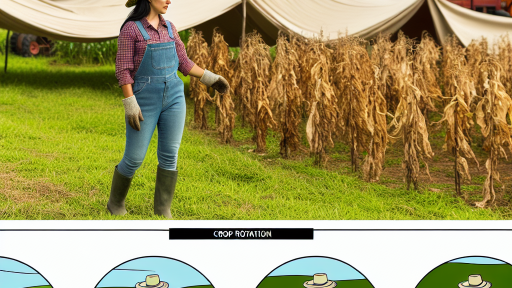Introduction to Palm Kernel Farming
Palm kernel farming stands as a vital agricultural practice globally.
It involves growing oil palms for their kernels.
These kernels are rich sources of oil. Many industries, including food, cosmetics, and biofuel, rely on this oil.
Thus, palm kernel cultivation holds significant global importance.
The economic benefits for farmers are considerable.
Firstly, palm kernel farming offers a steady source of income. It can transform local economies, especially in developing countries.
Moreover, it creates employment opportunities, both directly in cultivation and indirectly in processing and marketing.
This introduction lays the foundation for our comprehensive process guide.
We cover everything from selecting the right soil and seedlings to planting and maintenance.
Careful attention to each step ensures healthy growth and optimal yields. Additionally, we guide you through the harvesting process.
This involves identifying ripe clusters, safe collection, and efficient extraction of the kernels.
Our aim is to equip farmers with knowledge and techniques for successful palm kernel cultivation.
To summarize, mastering palm kernel farming can be lucrative and impactful. It contributes to global oil production and local economies.
Our process guide aims to simplify the journey from planting to harvesting, ensuring success for farmers worldwide.
Choosing the Right Location and Soil Preparation
Choosing the right location and soil preparation play critical roles in the successful cultivation of palm kernel trees.
Transform Your Agribusiness
Unlock your farm's potential with expert advice tailored to your needs. Get actionable steps that drive real results.
Get StartedThese trees thrive under specific conditions, which include the right mix of temperature, humidity, and soil type.
In this section, we delve into the essential steps to prepare your land for planting, emphasizing the importance of soil pH balance and how to adjust it for optimal growth.
Essential Conditions for Palm Kernel Tree Growth
Palm kernel trees require specific conditions to flourish. First, they need a temperature range of 24 to 32 degrees Celsius.
This means they perform best in tropical climates.
Second, high humidity levels are crucial for their growth. Lastly, they prefer deep, rich soils with good drainage.
Loamy soils meet these criteria perfectly, offering the best environment for root development and nutrient uptake.
Steps for Preparing the Land
- Clearing: Begin with clearing the land of any weeds, debris, and competing vegetation. This step ensures that your palm kernel trees have no competition for nutrients and water.
- Tilling: Next, till the soil to a depth of about 20 to 30 cm. Tilling helps aerate the soil, improving oxygen supply to the roots and promoting better water infiltration.
- Soil Enrichment: Enrich your soil with organic matter. Adding compost or well-rotted manure increases fertility, enhancing your trees’ growth and yield potential.
Importance of pH Balance
The pH level of your soil significantly affects nutrient availability to your palm kernel trees.
Ideally, these trees prefer slightly acidic to neutral soil, with a pH range of 5.5 to 7.
To ensure your soil is within this range, testing the pH is essential.
How to Test and Adjust Soil pH Levels
To test your soil pH, you can use a home testing kit or send a soil sample to a local agricultural lab.
If the pH is too low (acidic), applying lime can raise it.
Conversely, if the pH is too high (alkaline), sulfur helps lower it.
Applying these materials should happen several months before planting to give the soil time to incorporate the amendments properly.
- For acidic soils, sprinkle lime evenly across the surface, then till it into the soil to a depth of about 15 cm.
- For alkaline soils, distribute sulfur in the same manner and till it into the soil.
Adjusting the soil pH is a critical step that should not be overlooked.
Correct pH levels ensure that essential nutrients, such as nitrogen, phosphorus, and potassium, are available to your trees.
These nutrients are crucial for the development of strong, healthy palm kernel trees capable of high yields.
Choosing the right location and properly preparing the soil are fundamental steps in mastering palm kernel farming.
These initial steps set the foundation for successful crop growth.
By understanding and adhering to the specific requirements for temperature, humidity, and soil type, along with preparing the land correctly and ensuring the soil pH is balanced, you lay the groundwork for a prosperous palm kernel plantation.
Remember, the effort you put into soil preparation directly influences the health and productivity of your palm kernel trees.
Read: Crop-Specific Tech: Precision Cultivation Tips
Selecting High-Quality Seeds and Seedlings
Selecting high-quality seeds and seedlings stands as the foundation of a thriving palm kernel farm.
This choice deeply influences the farm’s overall productivity, disease resistance, and oil yield.
Understanding the criteria for selecting the best palm kernel seeds and seedlings ensures a strong start to your palm cultivation journey.
Showcase Your Farming Business
Publish your professional farming services profile on our blog for a one-time fee of $200 and reach a dedicated audience of farmers and agribusiness owners.
Publish Your ProfileCriteria for Selecting the Best Palm Kernel Seeds and Seedlings
- Look for certified seeds: Certified seeds have passed quality and health checks, assuring genetic purity.
- Assess physical health: Seeds and seedlings should be free from signs of diseases and pests.
- Consider age: Optimal seedlings are usually 9-12 months old, ensuring they are hardy enough for transplantation.
- Check for genetic quality: Opt for varieties known for high oil yield and disease resistance.
- Root development: Healthy seedlings have a well-developed root system, a sign of good nutrient uptake.
Understanding the importance of genetic quality and disease resistance can make or break your palm kernel farming endeavor.
High genetic quality ensures that the plants will reach their maximum productivity potential, whereas disease resistance minimizes the risk of loss from common ailments that could devastate your crop.
The Importance of Genetic Quality and Disease Resistance
- Improved yield: Superior genetics directly correlates with higher oil yields.
- Lower maintenance costs: Disease-resistant varieties reduce the need for pesticides and treatments.
- Faster growth: Quality genetics often lead to faster maturation and production.
- Better adaptability: Select seeds adapted to your local climate and soil conditions.
Moving forward, establishing a successful germination process and providing subsequent care for the seedlings are critical steps.
Pay close attention to these methodologies and tips to enhance your palm kernel farm’s productivity.
Methods and Tips for Successful Germination and Seedling Care
- Soak seeds before planting: Soaking seeds for 48 hours can improve germination rates.
- Use the right soil mix: A well-draining soil mix prevents root rot and supports healthy growth.
- Controlled temperatures: Maintain a consistent temperature around 28-32°C to encourage germination.
- Adequate moisture: Keep the soil consistently moist but not waterlogged to support seedling development.
- Provide shade: Young seedlings benefit from partial shade to avoid scorching under direct sunlight.
- Regular monitoring: Check seedlings for disease signs and moisture levels regularly.
- Nutrient management: Apply a balanced fertilizer according to soil test recommendations to support growth.
Remember, selecting high-quality palm kernel seeds and seedlings is a crucial investment in your farm’s future success.
By adhering to these criteria, understanding the importance of genetics and disease resistance, and following proven germination and care techniques, you position your palm kernel farm on a path toward high yields and sustainable production.
Embrace these practices to ensure your palm kernel farming operations flourish from the ground up.
Read: Tomato Harvesting: Techniques for Quality
Planting Techniques and Spacing
Mastering palm kernel farming requires understanding the intricacies of planting techniques and spacing.
These aspects are crucial for ensuring the healthy growth and maximum yield of your palm kernel plantation.
Let’s dive into the best practices for planting palm kernel seeds and seedlings, the optimal spacing guidelines, and the importance of proper depth and orientation in planting.
Best Practices for Planting Palm Kernel Seeds and Seedlings
To kickstart your palm kernel farming successfully, follow these best planting practices:
- Utilize high-quality seeds or seedlings from trusted sources to ensure good germination rates and plant health.
- Prepare the soil properly by ensuring it is well-tilled and free from weeds and debris.
- For seeds, soak them in water for 48 hours to enhance germination. For seedlings, ensure they are healthy and free from pest damage.
- Plant seeds or seedlings early in the morning or late in the afternoon to avoid the stress of midday heat.
- Water the planted area immediately to encourage root development and settle the soil around the seeds or seedlings.
Optimal Spacing Guidelines
Proper spacing is essential to prevent competition for nutrients, sunlight, and air circulation among plants:
- Space palm kernel trees 8 to 9 meters apart to provide ample room for growth and development.
- For denser plantations or limited space, a minimum of 7.5 meters between trees may work but requires careful management.
- Arrange the trees in a square or triangular pattern for efficient land use and easier access for maintenance and harvesting.
- Remember, tighter spacing demands more meticulous weed and pest control to maintain plant health.
The Significance of Proper Depth and Orientation in Planting
Getting the depth and orientation right when planting palm kernels is key to ensuring strong root systems and plant stability:
- Plant seeds 2 to 5 centimeters deep to ensure they are adequately covered but still close to the soil surface for easy germination.
- Place seedlings in a hole double the root ball’s size to give roots enough space to expand.
- Orient seedlings so that the sprout points upwards, ensuring the plant grows straight.
- Fill the hole gently but firmly around the seedling to eliminate air pockets and provide support for the plant.
- Check the seedling’s stability and adjust as needed before moving on to the next planting.
Following these detailed techniques and spacing guidelines ensures that your palm kernel farm sets off on the right foot towards a bountiful harvest.
Pay attention to these early stages of your plantation’s life, as they lay the foundation for the future success of your palm kernel farming venture.
Read: Chemical Fertilizers: Understanding Risks
Irrigation and Moisture Management
Irrigation and moisture management stand crucial in optimizing palm kernel tree health and productivity.
It ensures trees get the right amount of water, significantly impacting their growth stages.
This section delves into palm kernel trees’ water requirements, efficient water management techniques, and strategies to combat waterlogging while ensuring adequate drainage.
Understanding Water Requirements
Palm kernel trees’ water needs vary across different growth stages.
Young saplings demand consistent moisture for strong root development.
They thrive with regular, light watering. As trees mature, their water requirement increases but tolerates slight dry spells better.
Mature trees, especially those bearing fruit, need abundant water to sustain growth and ensure a high yield of palm kernels.
During dry seasons, irrigation becomes essential to prevent stress and maintain productivity.
Regularly checking soil moisture helps gauge when watering is necessary.
Efficient Water Management Techniques
Optimizing water usage ensures palm kernel trees receive adequate moisture without wastage. Here are key techniques:
- Drip Irrigation: Delivers water directly to the base of each tree, minimizing evaporation losses and preventing leaf diseases linked to excess moisture.
- Micro-sprinkler Systems: These provide a controlled distribution of water, simulating rainfall. They’re suitable for young saplings, promoting uniform growth.
- Soaker Hoses: Ideal for small-scale farms, soaker hoses offer a cost-effective way to maintain soil moisture evenly.
Incorporating mulching around tree bases further retains soil moisture and reduces the need for frequent watering.
Strategies to Prevent Waterlogging
Excess water poses as much risk as drought. Waterlogging impedes root oxygen intake, leading to stress and potential root diseases.
Implementing strategies to prevent waterlogged conditions is vital:
- Adequate Drainage: Designing farms with proper drainage channels ensures excess water flows away from the root zones. It protects trees during heavy rainfall.
- Soil Management: Incorporating organic matter improves soil structure, enhancing its water-holding capacity and drainage. Sandy loam soils offer the best permeability for palm kernel farming.
- Regular Monitoring: Keep an eye on rainfall patterns and soil moisture levels. Adjust irrigation schedules accordingly to prevent overwatering.
Emphasizing these irrigation and moisture management practices lays a foundation for thriving palm kernel trees.
It balances their water needs at different growth stages, employs efficient techniques to optimize water use, and safeguards against waterlogging.
This comprehensive approach ensures sustainable farming practices and maximizes productivity.
Read: Maximizing Yields with Organic Fertilizers
Fertilization and Nutrient Management
Fertilization and nutrient management play pivotal roles in palm kernel farming.
Proper application ensures trees grow healthy and produce high yields.
Delving into fertilization and nutrient management uncovers the intricacies of this crucial aspect.
Identifying the Nutrient Needs of Palm Kernel Trees
First, farmers must understand the specific nutrient needs.
Palm kernel trees demand a balanced diet, including nitrogen, phosphorus, potassium, and micro-nutrients like magnesium and calcium.
Soil tests prove indispensable for this. They reveal nutrient deficiencies, guiding farmers on what to add.
Showcase Your Farming Business
Publish your professional farming services profile on our blog for a one-time fee of $200 and reach a dedicated audience of farmers and agribusiness owners.
Publish Your ProfileRegular monitoring helps adapt the nutrient strategy as trees grow.
Organic vs. Chemical Fertilizers: Benefits and Application Rates
Choices between organic and chemical fertilizers matter significantly.
- Organic Fertilizers: They improve soil structure and fertility over time. Examples include compost, manure, and bone meal. Organic options release nutrients slowly, reducing the risk of over-fertilization. Farmers often apply these annually, based on the soil’s condition.
- Chemical Fertilizers: These provide immediate nutrient relief. They’re essential for correcting severe deficiencies quickly. However, misuse can harm soil health. Application rates vary, but following manufacturer’s guidelines ensures trees receive optimal benefits without the negatives.
Timely and Efficient Application Methods for Maximizing Nutrient Uptake
Timing and method can dictate the efficiency of fertilizer use.
- Timing: Apply fertilizers at the onset of the rainy season. This timing ensures nutrients reach the root zone, thanks to water distribution. Avoid application during dry spells to prevent nutrient loss through evaporation and runoff.
- Method: Use the broadcast method for large areas, spreading fertilizers evenly around the tree base. For targeted application, especially with liquid fertilizers, the drip irrigation system proves effective. It delivers nutrients directly to the root zone, minimizing wastage.
To sum up, mastering fertilization and nutrient management requires a thoughtful approach.
Farmers must identify nutrient needs through soil testing and choose between organic and chemical fertilizers wisely.
Timely, efficient application maximizes uptake, ensuring palm kernel trees thrive.
Embracing these practices will significantly improve the sustainability and productivity of palm kernel farming.
Pest and Disease Control
Palm kernel farming faces threats from various pests and diseases. Recognizing and managing these effectively ensures a healthy yield.
This section delves into the common adversaries of palm kernel farms, introduces integrated pest management (IPM) strategies, and underscores the importance of eco-friendly control measures.
It also highlights the crucial role of regular monitoring and prompt treatment.
Common Pests and Diseases Affecting Palm Kernel Farms
- Rhinoceros Beetle: Bores into the growing points, stunting or killing young trees.
- Leaf Miner: Damages leaf tissue, reducing photosynthesis and weakening trees.
- Red Palm Weevil: Larvae feed inside the trunk, often causing tree death.
- Bud Rot: A fungal disease that destroys the heart of the palm.
- Leaf Spot: Causes defoliation, reducing overall health and productivity.
Integrated Pest Management (IPM) Strategies
IPM combines various eco-friendly tactics to control pests and diseases. Its goal is not to eradicate pests but to keep their population at manageable levels.
- Cultural Practices: Keep fields clean and remove damaged plant parts early.
- Biological Controls: Introduce natural predators or pathogens to reduce pest populations.
- Physical and Mechanical Controls: Use traps or barriers to prevent pest access.
- Chemical Controls: Apply pesticides as a last resort, focusing on products with low environmental impact.
Eco-friendly Control Measures
Eco-friendly measures prioritize safety for humans, wildlife, and the environment. They ensure sustainable farming practices.
- Natural Predators: Encourage birds or beneficial insects that feed on pests.
- Neem Oil: Acts as a natural insecticide, deterring various pests.
- Fermented Organic Mixtures: Homemade remedies can sometimes offer effective control against certain pathogens.
- Pheromone Traps: Attract and capture pests, reducing their breeding potential.
The Role of Regular Monitoring and Prompt Treatment
Continuous observation is the backbone of successful pest and disease management. Regular checks help identify issues early, allowing for immediate action.
- Scout Your Farm: Regularly walk through your farm to spot early signs of infestation or disease.
- Identify Problems Quickly: Recognize pest or disease symptoms early to act fast.
- Implement Controls Promptly: Delay can worsen infestations, making control harder and more expensive.
- Record Findings: Keep track of issues, treatments, and outcomes to refine your IPM strategy.
The best approach to pest and disease control on palm kernel farms is proactive management.
Embracing IPM strategies and eco-friendly measures, combined with vigilant monitoring, can significantly mitigate risks.
This method not only protects the crop but also supports environmental health, ensuring the sustainability of the farming practice.
Remember, a small effort in regular monitoring and timely treatment can save a season’s yield.
Harvesting and Post-Harvest Handling
Farmers often ask when they should harvest palm kernels. Recognizing the right time hinges on observing certain maturity signs.
Generally, palm kernels mature about five to six months after pollination.
However, optimal harvesting times can vary depending on local climate conditions and palm varieties.
Here, we unfold the key indicators of maturity, adept harvesting techniques, and essential post-harvest processing for ensuring quality and longevity.
Indicators of Maturity
- Color Change: A visible change in fruit color from dark green to reddish, orange, or black indicates ripeness.
- Fruit Detachment: Fruits begin to drop naturally, signifying readiness for harvest.
- Sound Test: A hollow sound when tapping the fruit suggests it’s ripe.
Harvesting Techniques
Efficient harvesting minimizes damage and maximizes yield. Employing the right techniques is crucial.
- Use Proper Tools: Equip harvesters with long-handled, sharp cutting tools to avoid bruising the fruits.
- Cut Carefully: Aim to cut the fruit bunch stem close to the base, preventing harm to the tree and fruit.
- Safety Measures: Wear protective gear and train workers on safe climbing methods, reducing injury risks.
Post-Harvest Handling
Post-harvest processes determine the final product’s quality. Cleaning, drying, and storage need specific attention.
Cleaning
- Remove Debris: Clear the harvested kernels of any adhering dirt or leaves immediately.
- Wash Kernels: Gently rinse the kernels in clean water to remove residual sap and dirt.
Drying
- Spread Evenly: Lay the kernels out in a thin, even layer on drying racks or mats.
- Air Dry: Choose a well-ventilated area under the sun. Flip the kernels periodically for even drying.
- Moisture Content: Aim to reduce the moisture content to below 10% to prevent mold growth.
Storage
- Select Correct Containers: Use airtight containers to prevent moisture ingress and insect attacks.
- Control Temperature: Store at cool temperatures to maintain freshness and prolong shelf life.
- Monitor Regularly: Check stored kernels for signs of spoilage or pest infestation periodically.
In mastering palm kernel farming, understanding the nuances of harvesting and post-harvest handling can significantly impact yield quality and longevity.
Farmers ensure premium quality produce by recognizing the correct time to harvest, employing effective harvesting techniques, and adhering to rigorous post-harvest processes.
These practices not only maximize the potential of the yield but also contribute to the sustainability and profitability of palm kernel farming.
By focusing on these critical stages, farmers can achieve a balance between quantity and quality, ensuring a successful and fruitful harvest season.

Marketing and Selling Your Palm Kernel Produce
Understanding market demand and identifying potential buyers
Successful palm kernel farming hinges not just on cultivation, but also on effective marketing and sales strategies.
Understanding market demand becomes crucial. This involves researching to pinpoint who needs palm kernels and why.
Potential buyers often include oil processing companies and animal feed manufacturers.
Identifying these buyers opens up avenues to pitch your produce.
Once you understand the demand, pricing your produce becomes the next critical step.
Competitive pricing ensures you stay attractive to buyers while still making a profit.
The key lies in knowing your costs and the market rate. Keep abreast of market trends and price your kernels accordingly.
This requires a fine balance but ensures long-term profitability.
To attract and retain buyers, building solid relationships is essential.
This can be achieved through consistent communication and reliability in product quality and delivery.
Attend industry meetings and agricultural fairs to network with potential buyers.
This direct interaction often leads to securing contracts.
Strategies for pricing competitively while ensuring profit
Developing a marketing strategy plays a vital role. It should include:
Showcase Your Farming Business
Publish your professional farming services profile on our blog for a one-time fee of $200 and reach a dedicated audience of farmers and agribusiness owners.
Publish Your Profile- Detailing the unique qualities of your palm kernels.
- Utilizing social media to reach a wider audience.
- Engaging in direct marketing to potential buyers.
Furthermore, offering excellent customer service ensures repeat business.
Respond promptly to inquiries and complaints.
Keeping buyers informed about your production cycle and any delays builds trust and loyalty.
Considering offering flexible payment terms could also give you an edge.
Many businesses appreciate suppliers who understand their cash flow needs.
Such flexibility can lead to stronger business relationships and more consistent orders.
Approach to building relationships with buyers and securing contracts
Signing contracts with buyers safeguards your interests.
Ensure these contracts clearly state the terms of sale, including prices, quality expectations, and delivery schedules.
This not only formalizes the business relationship but also provides a legal recourse in case of disputes.
Finally, continual market analysis helps you adapt and thrive. Monitor changes in demand and buyer preferences.
This ensures your pricing and marketing strategies remain relevant.
Always be ready to pivot your strategy to meet market needs.
Marketing and selling your palm kernel produce requires a multifaceted approach.
Understanding market demand, competitive pricing, building buyer relationships, and adapting to market changes are key.
By executing these strategies effectively, you can maximize your farm’s profitability and ensure its long-lasting success.
Sustainable Practices and Future Perspectives
Best practices for sustainable palm kernel farming: crop rotation, organic farming, etc.
Sustainable palm kernel farming hinges on adopting eco-friendly practices.
Crop rotation stands out among such practices.
It enhances soil health, preventing nutrient depletion. Organic farming also plays a crucial role.
It involves using natural fertilizers and pest control methods, thereby reducing chemical use.
This approach not only preserves biodiversity but also safeguards water quality.
The future of palm kernel farming in the face of climate change and technological advancements.
Climate change poses significant challenges to palm kernel farming.
Rising temperatures and unpredictable weather patterns demand adaptive strategies.
Water conservation techniques become vital. Drip irrigation and rainwater harvesting can mitigate water scarcity risks.
Moreover, the selection of drought-resistant crop varieties offers resilience against harsh conditions.
Technological advancements offer promising solutions. Precision agriculture, for instance, optimizes resource use and increases efficiency.
By deploying sensors and software, farmers can monitor crop health and soil conditions in real-time.
This technology guides precise interventions, minimizing waste and enhancing productivity.
Encouragement for continuous learning and adaptation to new farming methods.
The future of palm kernel farming requires a commitment to continuous learning.
Encouraging farmers to stay informed about new methods and technologies is essential.
Workshops, online courses, and farming cooperatives serve as valuable resources.
They facilitate knowledge exchange and promote the adoption of innovative practices.
Ultimately, sustainable palm kernel farming demands a balanced approach. It combines traditional wisdom with modern science.
By embracing best practices for sustainability, and being open to learning and adaptation, farmers can ensure the longevity and profitability of palm kernel farming in the face of evolving challenges.




